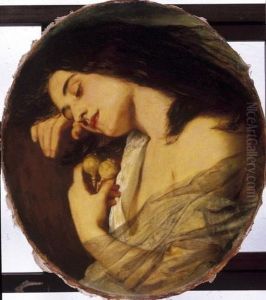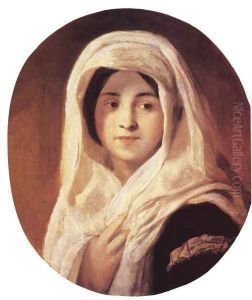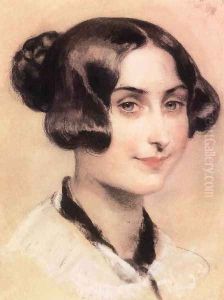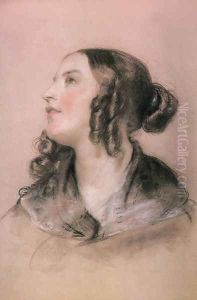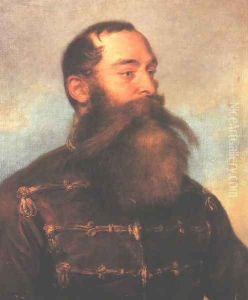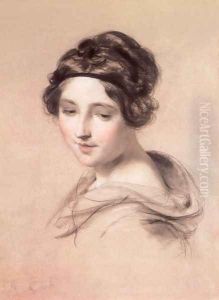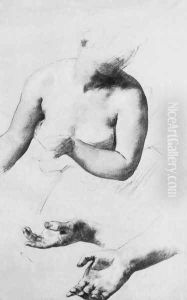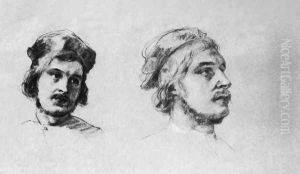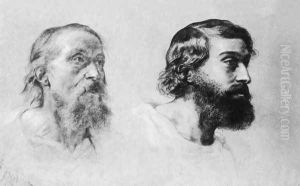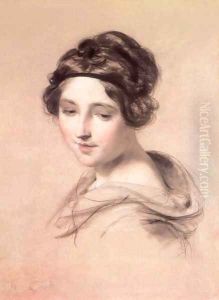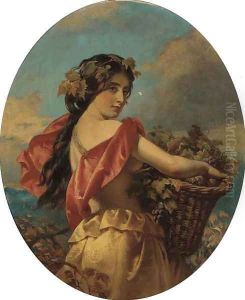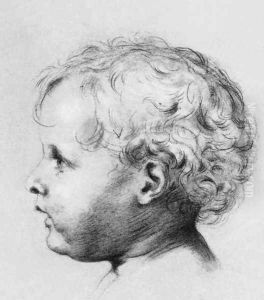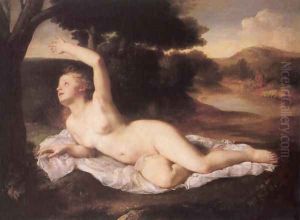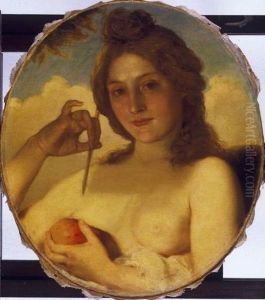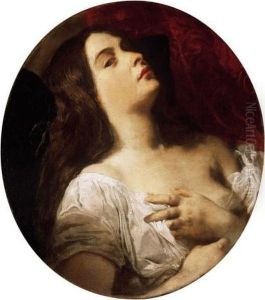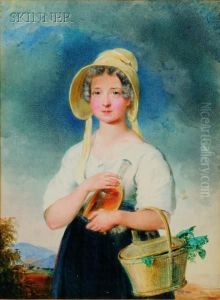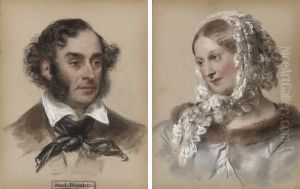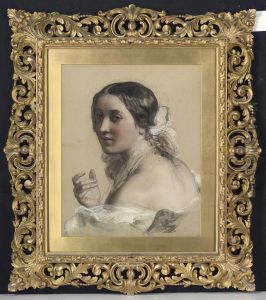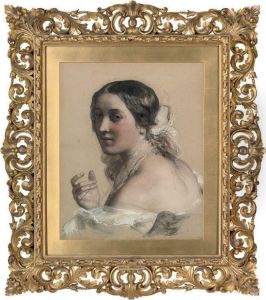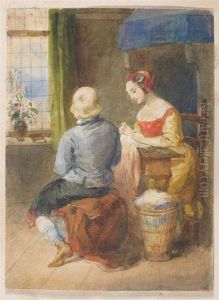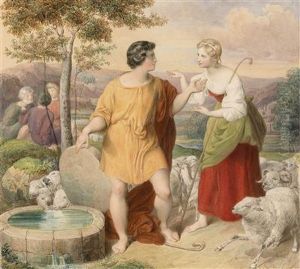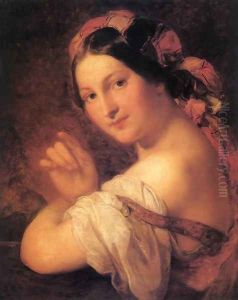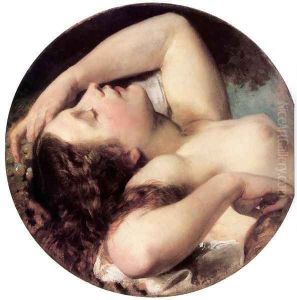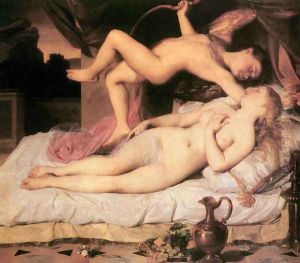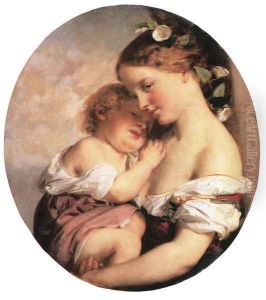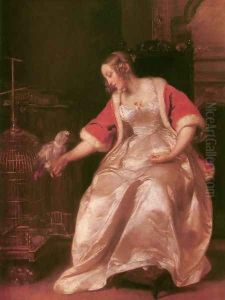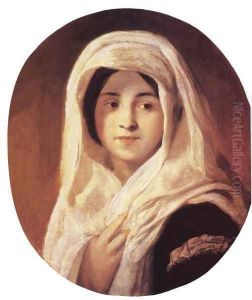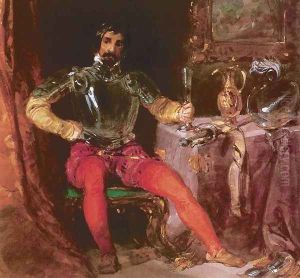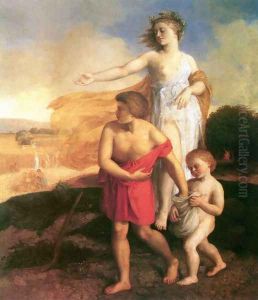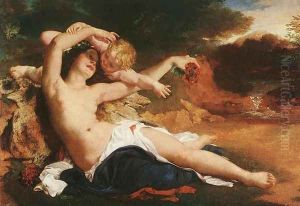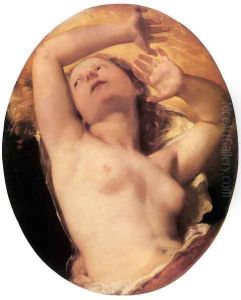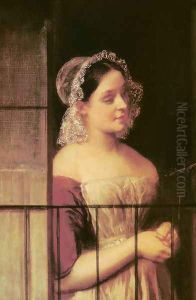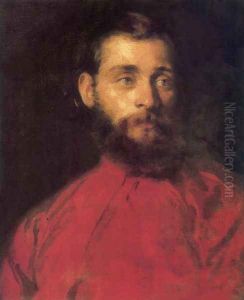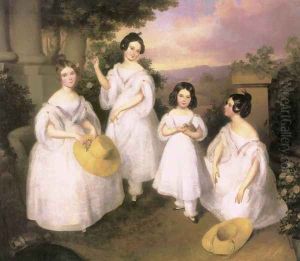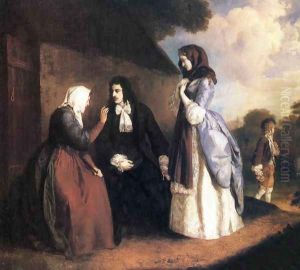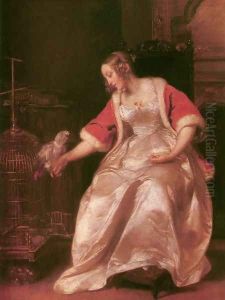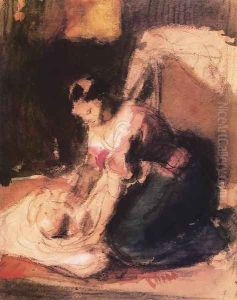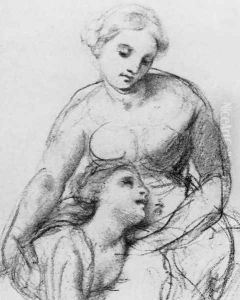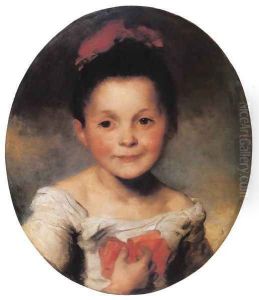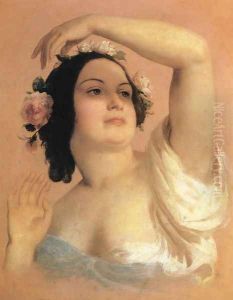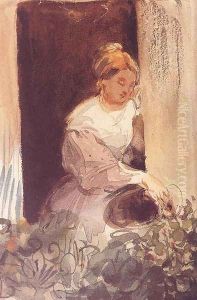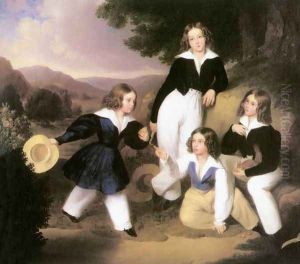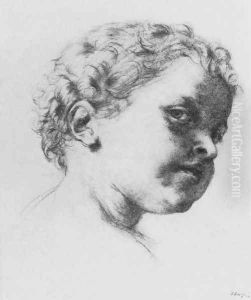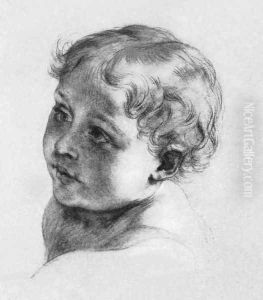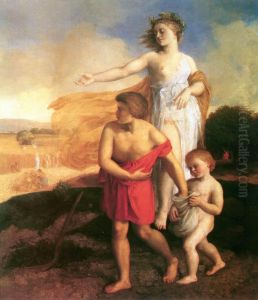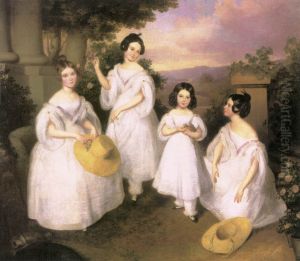Karoly Brocky Paintings
Karoly Brocky, also known as Charles Brocky, was a prominent Hungarian painter born on August 10, 1807, in Eperjes, Kingdom of Hungary (now Prešov, Slovakia). He developed a keen interest in the arts at an early age and pursued his education in the field of painting. Brocky's talent was evident, and he received support to study at the Vienna Academy of Fine Arts, which played a crucial role in shaping his artistic skills and style.
After his studies in Vienna, Brocky moved to London around 1833, where he further developed his career and gained notable recognition. During his time in England, he was influenced by the works of English portrait painters, which is reflected in his own style. Brocky specialized in portrait painting and is renowned for his delicate portrayal of women and children, capturing their elegance and grace with a romantic sensibility. His work often exhibited the qualities of the Biedermeier style, which was characterized by simplicity, sentimentality, and a focus on middle-class domesticity.
Brocky achieved considerable success in England, with his paintings being exhibited at the Royal Academy of Arts and the British Institution. His clientele included members of the British aristocracy, and his works were highly sought after. Despite living abroad, Brocky maintained a strong connection to his Hungarian roots and was actively involved in promoting Hungarian art and culture within the United Kingdom.
Karoly Brocky's health deteriorated in the early 1850s, and he passed away on January 9, 1855, in London. His death marked the loss of a significant figure in the art world, both in Hungary and in the United Kingdom. Brocky's legacy continues to be celebrated, and his paintings are held in high esteem, with several of them displayed in art galleries and museums across Hungary and the UK.
